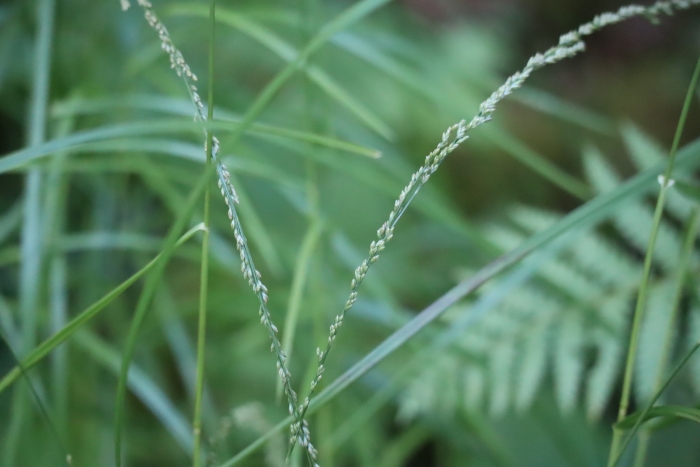Melic Mannagrass
(Glyceria melicaria)
Melic Mannagrass (Glyceria melicaria)
/
/

© Henry "Nick" Robertson
CC BY-SA 4.0
Image By:
© Henry "Nick" Robertson
Recorded By:
Copyright:
CC BY-SA 4.0
Copyright Notice:
Photo by: © Henry "Nick" Robertson | License Type: CC BY-SA 4.0 | License URL: http://creativecommons.org/licenses/by-sa/4.0/ | Uploader: henrythesick | Publisher: iNaturalist |

























Estimated Native Range
Summary
Glyceria melicaria, commonly known as melic mannagrass or northeastern mannagrass, is a perennial grass native to a variety of wet habitats including marshes, wet meadows, fens, wet forested areas, and along the edges of ponds and streams in the eastern United States, from New Brunswick to Ontario, and south to Illinois and the Appalachian Mountains. It typically grows 2-4 feet tall and features smooth leaf sheaths, translucent ligules, and lax, elongate leaves. The inflorescence is a panicle that blooms from late June to August, with flowers that are not particularly showy but are ecologically valuable for wetland wildlife.
Melic mannagrass is valued for its ability to thrive in wet conditions and is often used for soil stabilization and habitat restoration projects. It is also suitable for rain gardens and naturalized areas where its adaptability to fluctuating water levels is beneficial. This grass prefers full sun to part shade and can tolerate a range of soil types, provided they are consistently moist. It is generally low-maintenance but may require management to prevent it from spreading too aggressively in garden settings. While it does not have major disease issues, it can be susceptible to rust in some conditions.CC BY-SA 4.0
Melic mannagrass is valued for its ability to thrive in wet conditions and is often used for soil stabilization and habitat restoration projects. It is also suitable for rain gardens and naturalized areas where its adaptability to fluctuating water levels is beneficial. This grass prefers full sun to part shade and can tolerate a range of soil types, provided they are consistently moist. It is generally low-maintenance but may require management to prevent it from spreading too aggressively in garden settings. While it does not have major disease issues, it can be susceptible to rust in some conditions.CC BY-SA 4.0
Plant Description
- Plant Type: Grass
- Height: 1.5-3 feet
- Width: 1.5-3 feet
- Growth Rate: Moderate
- Flower Color: N/A
- Flowering Season: Spring, Summer
- Leaf Retention: Deciduous
Growth Requirements
- Sun: Full Sun, Part Shade
- Water: Medium
- Drainage: Medium, Slow
Common Uses
Bird Garden, Deer Resistant, Erosion Control, Low Maintenance, Water Garden
Natural Habitat
Wet meadows, fens, wet forested areas, and pond and stream edges
Other Names
Common Names: Fowl Mannagrass, Low Manna Grass, Slender Mannagrass, Long Mannagrass, Northeastern Mannagrass
Scientific Names: , Glyceria melicaria, Glyceria elongata, Glyceria torreyana, Panicularia elongata, Panicularia melicaria, Panicularia torreyana, Panicum melicarium, Poa elongata, Poa elongata
GBIF Accepted Name: